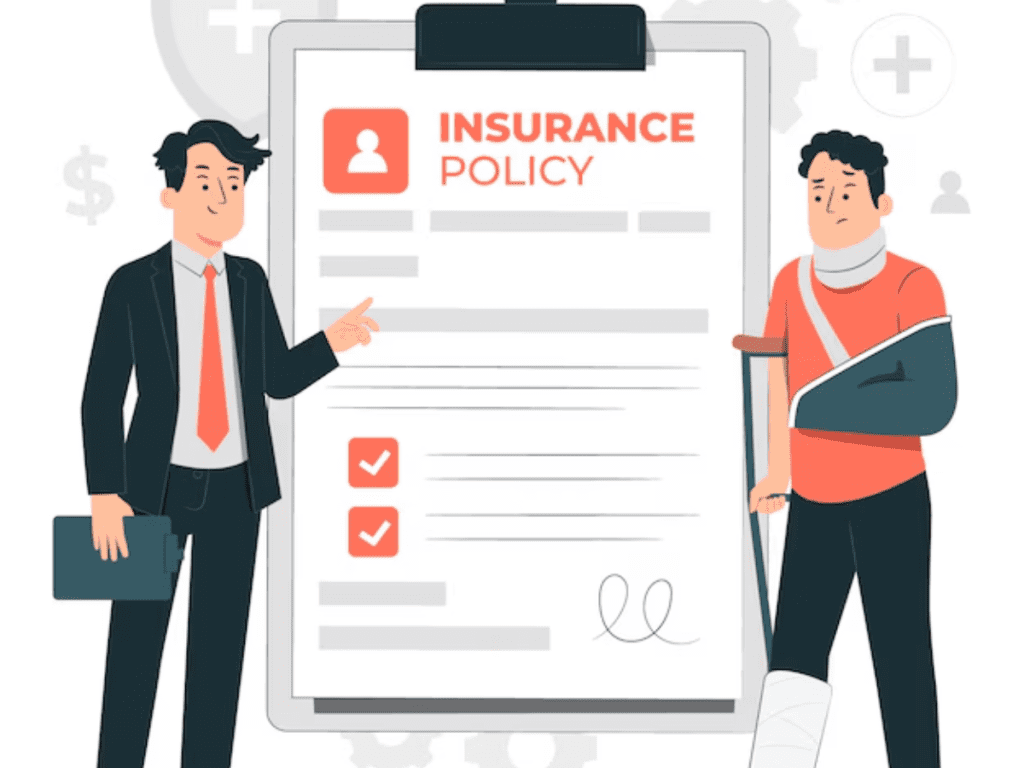Introduction
Your home isn’t just a building—it’s where memories are made, families grow, and dreams take shape. It’s also one of the most significant financial investments you’ll make in your lifetime. That’s why protecting it from the unexpected is crucial. Home insurance acts as a vital safety net, offering financial security when life throws unforeseen challenges your way. Whether it is a natural disaster, accidental damage, or theft, having comprehensive home insurance ensures your home and belongings are shielded, giving you peace of mind when you need it most.
What Is Home Insurance?
Home insurance also comes as homeowner’s insurance, which helps protect your property, including your personal belongings, against potential risks. It is designed to protect homeowners against injuries and accidents that occur at their home or its locations, as well as the liability thereof. The coverage may vary according to the policy, but it all points towards reducing financial hardships from unexpected events.
It’s part of life. Storms can come, fires can breakout due to mishaps that aren’t foreseen, and thefts can strike when least anticipated. Without the protection of home insurance, repair or replacement cost of damaged or stolen items can easily surpass your savings, and you’d be forced to accumulate debt. This is where home insurance comes into play, which helps you rebuild without depleting your finances or accumulating any debt.
Here are a few reasons why home insurance is indispensable:
- Protection Against Natural Disasters: While no one can prevent disasters like hurricanes, earthquakes, or floods, home insurance ensures you won’t have to bear the full cost of repairs or rebuilding.
- Coverage for Theft or Vandalism: If your home is broken into or vandalized, home insurance can replace stolen items and cover repair costs.
- Liability Coverage: Accidents can happen—whether it’s a visitor tripping on your steps or your child accidentally breaking a neighbor’s window. Home insurance provides liability coverage to handle these situations without added stress.
- Peace of Mind: Knowing that your home and belongings are protected allows you to focus on what truly matters—living your life and caring for your loved ones.
What Does Home Insurance Cover?
Home policies are typically a comprehensive package with a full array of coverages. Here is a breakdown of some of the more common inclusions:
1. Dwelling Coverage
Dwellings, under dwelling coverage, protect the home’s structure with walls, a roof, and foundation. Without this coverage, if your house is damaged through covered risks, such as fires, storms, or vandalism, you would face the hefty price of rebuilding or repairing your house.
2. Personal Property Coverage
Your personal belongings—furniture, electronics, clothing, and even jewelry—are valuable. Personal property coverage helps repair or replace these items if they’re damaged, destroyed, or stolen. Some policies even cover belongings outside your home, such as items stolen from your car.
3. Liability Protection
Accidents do occur, and in case someone is injured on your property, you might be held liable. Liability protection covers medical expenses, legal fees, and damages if you’re found responsible for an injury or property damage.
4. Additional Living Expenses (ALE)
In the event that a covered occurrence renders your home uninhabitable, ALE coverage will pay for temporary housing and living expenses. This may be in the form of hotel bills, meals, or transportation expenses while your home is being restored.
5. Other Structures Coverage
Other structures on your property, not attached to your home, are also covered by most policies. This includes garages, sheds, or fences, ensuring every aspect of your property is protected.
What Isn’t Covered by Home Insurance?
Although home insurance covers much, there is still some thing that is not covered. Basic policies usually exclude coverage for the following:
- Flood damage, unless you have bought a separate flood insurance
- Earthquake damage; a separate policy or rider will be required
- Wear and tear or maintenance-related issues
- Pest damage caused by termites or rodents
- High-value items that exceed the policy limits (rare jewelry or artwork, for example)
By knowing these exclusions, you can buy additional coverage or riders to fill in the gaps of protection.
Types of Home Insurance Policies
Home insurance is not a one-size-fits-all. There are different types of policies designed to meet different needs:
- HO-1 (Basic Form): Covers a limited range of perils like fire, lightning, and theft. Rarely used due to limited coverage.
- HO-2 (Broad Form): Provides more comprehensive coverage, including risks like falling objects and freezing pipes.
- HO-3 (Special Form): The most common policy, offering broad protection for your home and belongings.
- HO-4 (Renters Insurance): Designed for tenants, covering personal belongings and liability, but not the structure.
- HO-5 (Comprehensive Form): Offers the highest level of coverage, including replacement cost coverage for belongings.
- HO-6 (Condo Insurance): This type of insurance is specifically designed for condo owners. It covers the unit and personal property.
- HO-8 (Older Home Insurance): This is designed for historic or older homes that have special rebuilding requirements.
How to Choose the Right Home Insurance Policy
Choosing the right policy can be overwhelming, but with careful consideration, you can find coverage that meets your needs. Here’s a step-by-step guide:
- Evaluate Your Needs: Determine the value of your home and personal belongings. Consider factors such as location, risks (e.g., flood-prone areas), and rebuilding costs.
- Understand Policy Terms: Familiarize yourself with coverage limits, deductibles, and exclusions to avoid surprises when filing a claim.
- Compare Providers: Research multiple insurance providers to find competitive rates and customer-friendly policies.
- Bundle Policies: Many insurers provide discounts in order to bundle the two policies of home and auto, saving you money.
- Read Reviews: Search for customer reviews and ratings to find out how reliable an insurance provider is.
How to Save Money on Your Home Insurance
While home insurance is necessary, it does not need to blow your wallet. Here are a few tips on lowering your premiums:
- Raise Your Deductible: The higher your deductible, the lower your monthly premiums.
- Install Safety Features: Installing security systems, smoke detectors, or stormproof windows can make you eligible for discounts.
- Maintain a Good Credit Score: Insurers often use credit scores to determine your rates. In general, good credit means low premiums.
- Don’t File Small Claims: Filing small claims can increase your premiums. Pay out-of-pocket for minor repairs whenever possible.
Other Advantages of Home Insurance
Home insurance covers more than just damage to property or property loss due to theft. The benefits are diverse and add value to it, making it an indispensable element of any financial planning. This post shall discuss some of the other benefits associated with a comprehensive home insurance policy:
1. Cover for Important Items
Most ordinary home insurance plans include personal possessions, but valuables like rare jewelry, collectibles, or expensive artworks could be left uninsured or insufficiently covered beyond policy limits. Through scheduled personal property coverage (add-on), such valuable items would always be covered comprehensively.
2. Natural Disaster Readiness
If you reside in a region susceptible to natural disasters such as hurricanes, tornadoes, or wildfires, home insurance is definitely a must-have. Most service providers provide the option for special add-ons or specific policies designed to deal with regional risks like flood or earthquake insurance.
3. No-Fault Medical Coverage
Most policies include no-fault medical coverage, which means that in case your guest is injured at your home, he may be able to get medical bills covered without having to sue you. Thus, relationships are preserved and potential court combat with the guest avoided.
4. Rebuilding to Modern Standards
If your home is destroyed and needs to be rebuilt, modern building codes may necessitate requirements that were not included in your structure originally. Many homeowners insurance policies include ordinance or law coverage for such upgrades, which come at a cost.
5. Business Property Coverage
For home-based business owners, some policies offer very limited coverage for business equipment, such as computers and printers. If you have a home business, you are usually able to purchase a business rider for added protection.
Common Home Insurance Myths
Even though home insurance is so important, there are still many misconceptions about it. Let’s set the record straight on some of the most common myths:
1. “Home Insurance Covers Everything.”
While home insurance is full-spectrum, there are some situations it does not cover. Flooding, earthquake damage, or neglect are examples of damages not covered unless you purchase additional coverage.
2. “My Land is Covered.”
The policy covers the house and other structures but not the land on which your house sits. If your yard or landscaping gets damaged, your coverage may be limited or non-existent.
- “I Don’t Need Home Insurance if I Don’t Have a Mortgage.”
Home insurance is indispensable, even when you own the home outright. In the event that something happens and you end up paying the entire cost to fix or replace whatever was affected. - “Home Insurance is Too Expensive.”
While they do fluctuate by location, type of coverage, and provider, home insurance is often less expensive than many expect. Plus, there are a variety of ways to make it even more affordable, such as combining coverage or adding certain safety features.
How to File a Home Insurance Claim
In the aftermath of a disaster, knowing how to file a claim can be pretty important. Follow these steps for a smooth, stress-free claims process:
- Photograph the Damage: Take pictures or videos of the damage for record purposes. This will be of great importance when the insurance adjuster comes to inspect the damage and assess the extent of the loss.
- Call Your Insurance Company: Notify your insurance company as soon as possible. Most providers have 24/7 helplines for emergencies.
- Check Your Policy: Get familiar with the details of your policy, which includes coverage limits and deductibles, to understand what is covered.
- Collaboration with the Adjuster: An insurance adjuster will assess the damage and estimate the cost of repair or replacement.
- Receipts to Save: If you require temporary repairs or other living arrangements, make sure to retain all receipts so that these are reimbursed.
- Follow through: Keep frequent communication with your insurance company throughout your claim process in order for your claim to be processed promptly.
How Frequently Should You Review Your Home Insurance?
Life changes, and so do your insurance needs. It’s important to review and update your home insurance policy regularly to ensure you’re adequately protected. Consider revisiting your coverage in the following scenarios:
- Renovations or Additions: If you’ve added a new room, upgraded your kitchen, or built a backyard deck, you’ll need to adjust your policy to reflect the increased value of your home.
- Major Purchases: Acquiring expensive items like jewelry, electronics, or art may require additional coverage.
- Change in Living Situation: Whether you’re renting out part of your home or having a family member move in, changes in occupancy can impact your policy.
- Market Fluctuations: If property values in your area have increased, it’s worth reassessing your dwelling coverage to ensure it aligns with current rebuilding costs.
Final Thoughts: Securing Your Future with Home Insurance
Home insurance is more than a legal requirement or financial safety net. Protecting what matters most is a commitment that will secure your future. Ranging from safeguarding your property and belongings to delivering peace of mind, it plays a vital role in helping you weather life’s uncertainties.
By understanding your policy, exploring other coverage options, and regularly reviewing your needs, you ensure that your home insurance gives you the comprehensive protection you deserve. Remember, a well-insured home is not just an asset but a sanctuary where you and your loved ones can thrive no matter what life brings your way.

